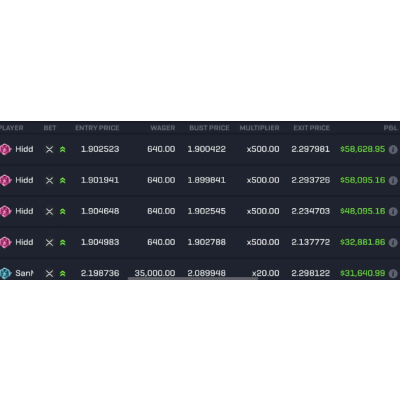

Algorithmic trading has revolutionized financial markets. By automating trade execution based on predefined strategies, algorithmic trading aims to maximize returns while minimizing risk and human emotion.
Python has become a popular language for developing algorithmic trading strategies thanks to its ease of use and robust ecosystem of financial data libraries. This article explores the viability of creating your own basic trading bot with Python.
Getting Started with Python for Finance Before diving into building a trading bot, some Python finance fundamentals are required. Python is a versatile, readable programming language used for everything from web development to machine learning.
Financial analysts and quant traders leverage Python for analyzing market data and building trading strategies thanks to packages like Pandas, NumPy, and SciPy. Additionally, Python connects to brokerage and cryptocurrency exchanges via APIs to execute trades programmatically.
Here are some recommended first steps:
Mastering these foundation skills establishes a solid base for designing a functioning trading bot in Python.
Once familiar with Python and key financial programming concepts, it’s possible for even novice coders to create a basic trading bot. The following steps demonstrate a simplified approach:
The first requirement is brokerage connectivity to place buy and sell orders programmatically. Most retail brokerages like TD Ameritrade and E*TRADE offer Python APIs to link trading bots directly to live portfolios. Signing up and configuring API credentials establishes this critical connection.
Financial market data provides the inputs for dictating bot trades. Common data sources include CSV files, databases, or live data feeds. Pandas can ingest various formats, allowing importing stocks, options, crypto, forex, or other instruments.
This brains of the operation transforms market data signals into executable trades. Code your own indicator formulas or apply technical indicators from libraries like TA-Lib. Establish entry rules, position sizing guidelines, stop losses, take profit targets, and other constraints. Consider both long and short-oriented logic.
With data imported and a strategy coded, placing trades kicks off bot automation. Employ the brokerage API to submit buy and sell orders according to strategy positions. Manage open trades by monitoring prices, adjusting stops, closing at targets, handling errors, and more.
Allow the Python bot to run, scanning data and acting on signals continuously. Monitor performance across backtests and live trading while making incremental improvements. Tweak indicators, parameters, trade size rules in pursuit of higher returns.
This simplified approach gets a functioning Python trading bot up and running relatively quickly. However, enhancements take this from an educational exercise to viable algorithmic trading system.
While feasible to create a basic Python bot for automated trades, expect underwhelming performance without further improvements. Here are impactful upgrades to consider:
Reduce Latency For time-sensitive algorithms, network connectivity and trade execution delays degrade results. Consider a colocated server for minimal latency.
Optimize Signals The strategy powering trades is only as good as its logic. Extensively backtest indicator combinations and tune settings to discover optimal buy/sell signals.
Consider Account Context Factor current portfolio exposures, cash balance, leverage and Greeks into sizing decisions rather than trading lots. Prevents overcrowding while aligning with account risk preferences.
Employ Advanced Orders Simple market buys and sells carry reversion risks. Limit orders, stop orders and algos like VWAP provide further precision.
Incorporate AI Models Machine learning models like regression, neural networks and reinforcement learning unlock nonlinear insights.
Overall, mastering these advanced enhancements takes Python bots from basic prototypes to institutional-grade setups. Significant development, research, simulations and practice trades are required though. Have realistic expectations when evaluating viability.
After building a Python algorithmic trading bot, objectively gauge its readiness to trade live capital:
Robust Backtest Results Rigorously test across historical bull, bear & sideways markets. Determine max drawdown, risk-return profile and tail risks.
Consistent Paper Trading Forward test strategy in real-time before committing capital. Demand consistency between backtests and paper trading.
Favorable Risk-Reward Profile Projected returns justify taking on the drawdowns, volatility and tail risks uncovered in testing.
Regulatory Compliance Understand registration, reporting rules. Intentional manipulation attempts carry legal liability.
Disciplined Trade Management Logic for entries, exits, sizing, risk controls must all align with prudent capital management.
Sufficient Infrastructure Redundancy Exchange outages, API disconnects, power failures and various errors will occur. Plan for redundancy.
If these criteria are satisfied, further vetting through paper trading and consultation with legal/compliance teams paves way toward readiness.
Python provides inspiring possibilities for solo developers to dabble in algorithmic trading. The barriers to build a functioning proto-bot are definitely lowering. However, viable strategies demand much more than coding skills. Success requires research, creativity, analytics, risk management and awareness of own biases and limitations. Additionally, relatively simple Python bots face intensely competitive markets alongside sophisticated algorithms and AI.
So while definitely possible to create a Python trading bot, take an honest appraisal of motivations. Building for education & entertainment purposes carries less pressure than attempting to replace income streams. Thoroughly investigate this competitive environment before staking significant capital based purely on own coding abilities without requisite trading experience. A prudent starting point involves paper trading ideas using play money for an extended time period.
Hopefully exploring bot creation inspires ideas regardless of ultimate path. Python does enable relatively quick experimentation. Use that designer advantage to uncover something market inefficiencies other algorithms may be missing. With dedication to continuous incremental testing and improvement, Python remains a powerful tool for exploring automated trading potential.